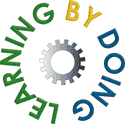What do candidates on the Pneumatic training course actually do?
We begin by looking at the various symbols used to describe pneumatic components and get the candidates to think about how these devices would be used in various applications. We have a range of cut-away demonstration parts which the candidates use to understand how the devices function (and the faults that they might develop).
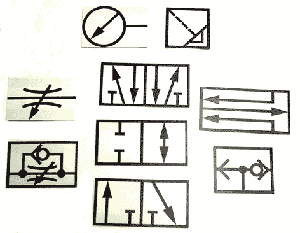 |
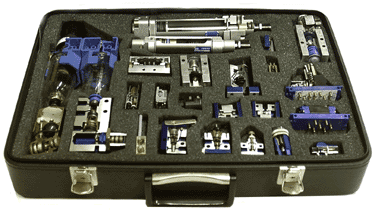 |
We use large magnetic symbols to ISO 1219-1 of pneumatic components (which stick onto whiteboards) so that our instructors can explain how the components function and how they are interconnected to create useful systems on the Pneumatic training course |
A selection of our sectioned pneumatic components - candidates gain an understanding of the functionality by looking at these and appreciating what may go wrong with each component |
We give our candidates a range of these components to analyse the functionality of.
 |
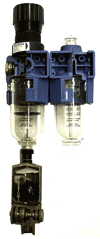 |
 |
A sectioned ISO 6431 cylinder used on the Pneumatics training course |
A sectioned filter / regulator / lubricator with automatic drain used on the Pneumatics training course |
A sectioned ISO 6432 cylinder used on the Pneumatics training course |
 |
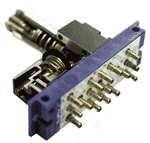 |
 |
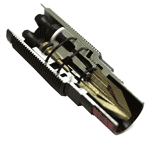 |
A sectioned solenoid valve |
A sectioned sequence valve |
A sectioned pneumatic timer |
A sectioned pneumatic reflex |
The candidates are then given the task of thinking about how these components would be used in various applications, without getting involved in all the mathematics and physics associated with this technology. Some extracts from the course notes for the Pneumatics training course help to demonstrate this approach:
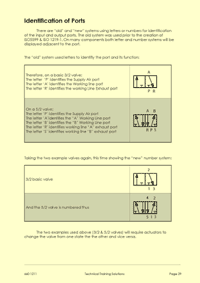 |
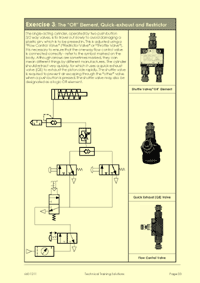 |
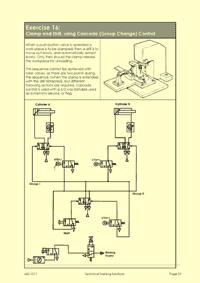 |
Page 29 from the course notes used on |
Page 33 from the course notes used on |
Page 51 from the course notes used on |
We then present the candidates with a range of pneumatic components with which to build circuits themselves:
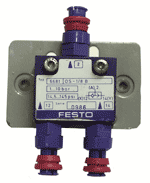 |
 |
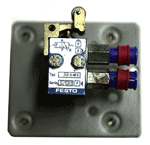 |
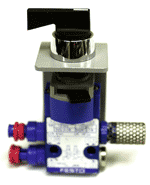 |
One of the AND elements which candidates interconnect in the practical exercises to form various useful systems on the Pneumatics training course |
One of the restrictors which candidates interconnect in the practical exercises to form various useful systems on the Pneumatics training course |
One of the 3/2 roller valves which candidates interconnect in the practical exercises to form various useful systems on the Pneumatics training course |
One of the 3/2 piloted valves which candidates interconnect in the practical exercises to form various useful systems on the Pneumatics training course |
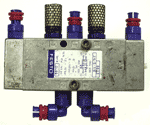 |
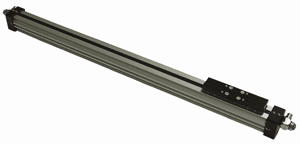 |
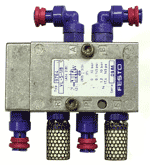 |
One of the double-piloted 5/2 way valves which candidates interconnect in the practical exercises to form various useful systems on the Pneumatics training course |
One of the rodless cylinders which candidates interconnect in the practical exercises to form various useful systems on the Pneumatics training course |
One of the single-piloted 5/2 way valves which candidates interconnect in the practical exercises to form various useful systems on the Pneumatics training course |
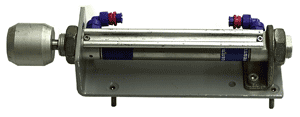 |
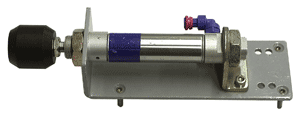 |
One of the magnetic piston double-acting cylinders which candidates interconnect in the practical exercises to form |
One of the single-acting cylinders which candidates interconnect in the practical exercises to form various useful systems on the Pneumatic training course |
Electro-pneumatic components are then introduced to the course:
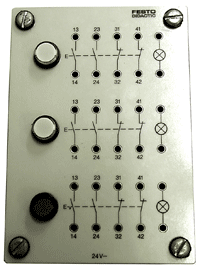 |
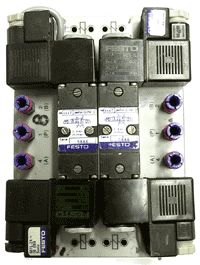 |
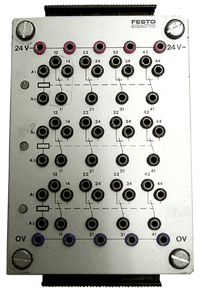 |
One of the push-button valves which candidates interconnect in the practical exercises to form various useful systems on the Pneumatic training course |
One of the solenoid-operated 5/2 way valves which candidates interconnect in the practical exercises to form various useful systems on the Pneumatic training course |
One of the relay boards which candidates interconnect in the practical exercises to form various useful systems on the Pneumatic training course |
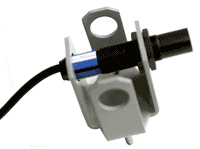 |
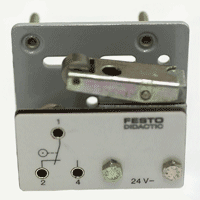 |
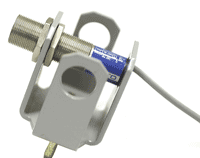 |
One of the optical proximity switches which candidates interconnect in the practical exercises to form various useful systems on the Pneumatic training course |
One of the roller microswitches which candidates interconnect in the practical exercises to form various useful systems on the Pneumatic training course |
One of the inductive proximity sensors which candidates interconnect in the practical exercises to form various useful systems on the Pneumatic training course |
The candidates build these various circuits on our modular boards, allowing them to gain familiarity with the interconnections of the discrete devices as well as the operation of the components within a larger system. Faultfinding skills are also developed at this stage.
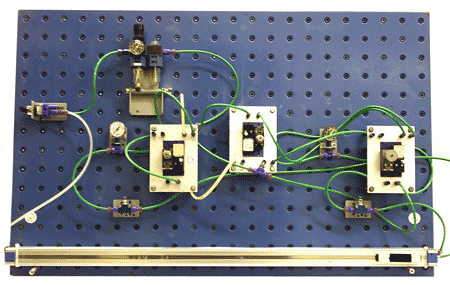 |
One of the modular assembly boards which candidates use to interconnect pneumatic components in the practical exercises to form various useful systems on the Pneumatic training course |
The course also provides candidates with a range of useful reference material, for example the range of threads used for pneumatic components, recommended oils and a full list of symbols that they are likely to come across:
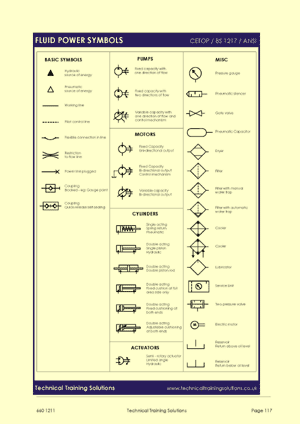 |
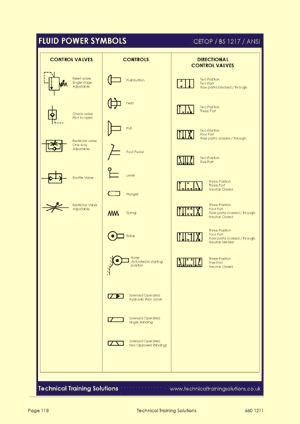 |
An extract from the course notes for the pneumatic course, showing symbols to ISO 1219-1 and BS 2917 |
|
If you would like to see some of the equipment used on the Pneumatic training course for yourself, then please call us to arrange a visit to our offices in Kent. Alternatively, we can visit you anywhere in the British Isles.
